10:00 – 10:30
Co-occurring mental and physical conditions, Autistic experiences, thinking, and perceptions
Activities & Materials: Watch & Read 2.2, Discuss 2.2, Think & Reflect 2.1
Material: Worksheet 2.3, Worksheet 2.4,Worksheet 2.5, Video/internet 2.6
#5. Introduce the content of this section, the two areas (co-occurring conditions and autistic experiences, thinking and perception and the material and activities)
Note: Present slide number 14
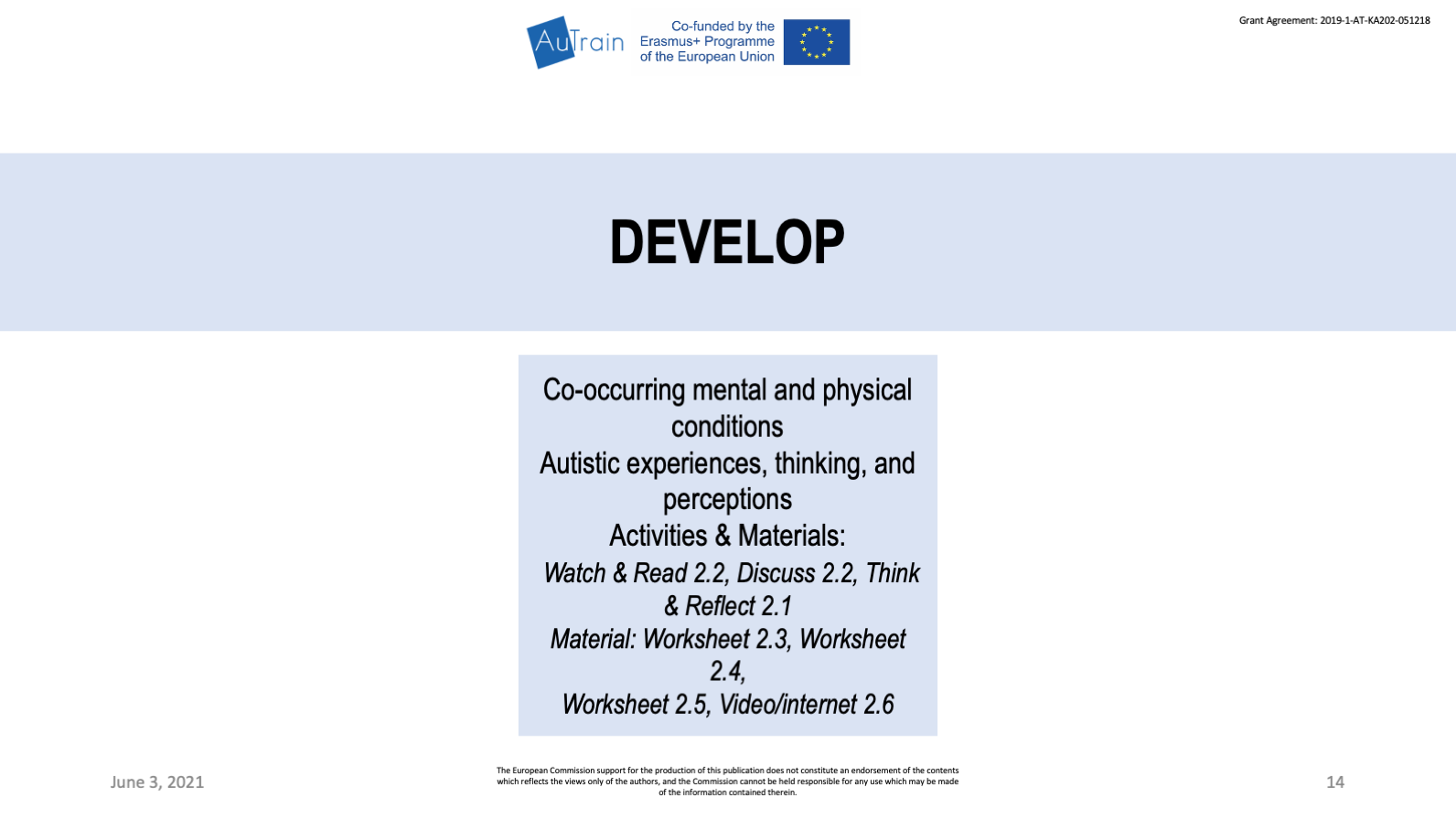
#6. Introduce and develop the Activity Read and Watch 2.2
Note: Present slides number 15 and then 16 and 17
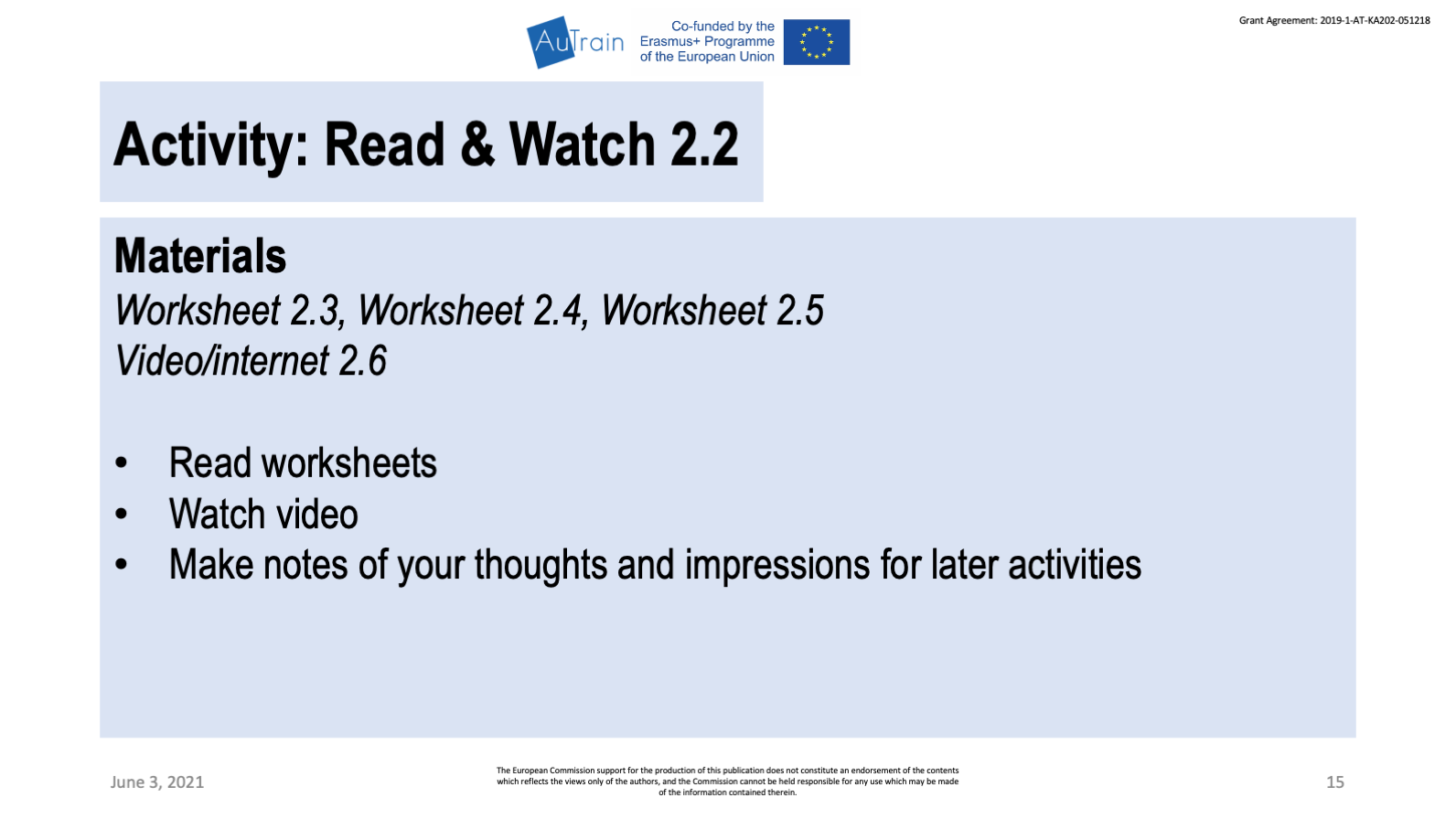
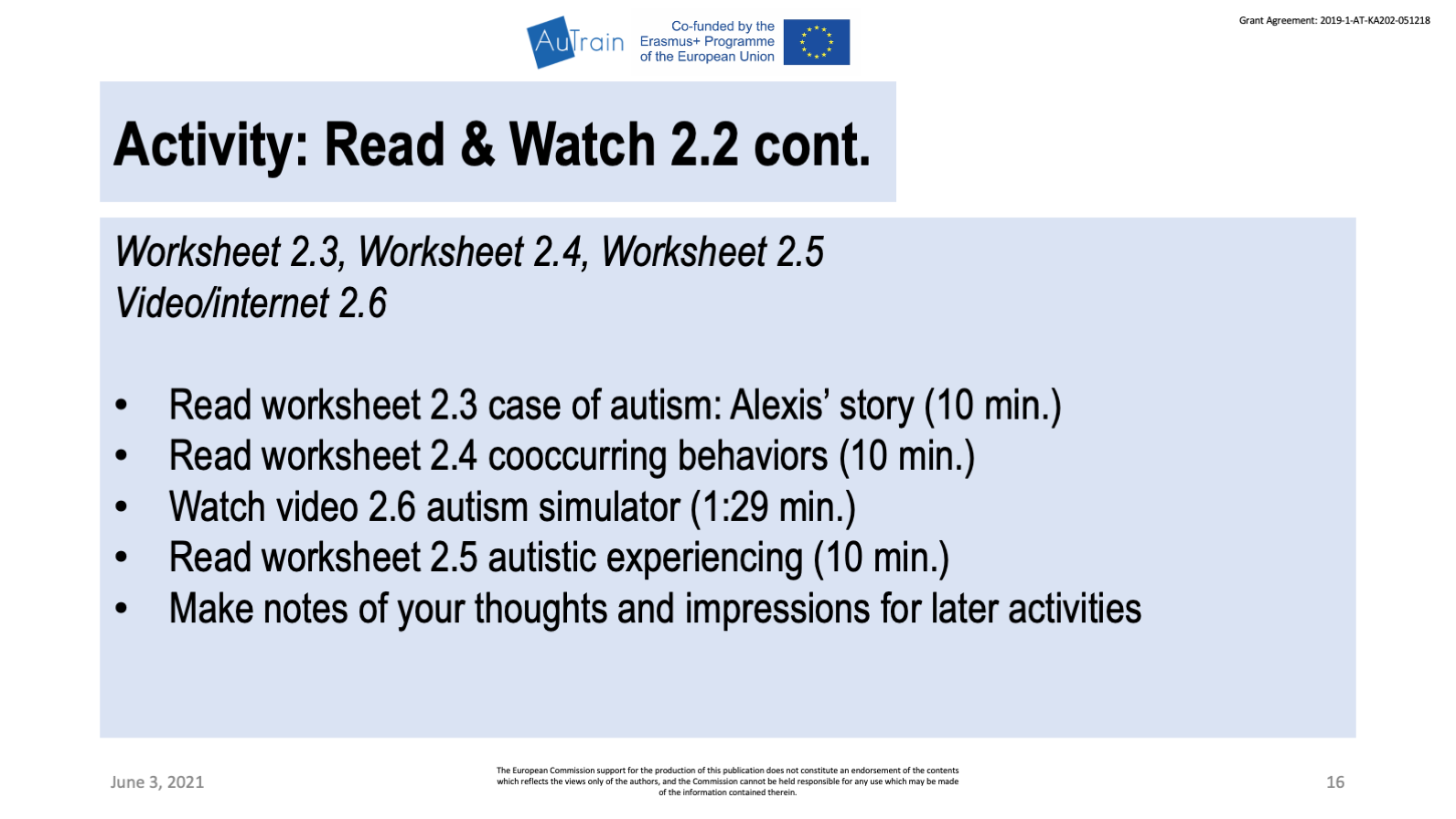

Introduce the aim of the activity
The objective of this activity is to provide the participants with information about how about can present in individual cases and how autistic people perceive the world and their style of thinking. The main idea is to deepen and extent what they read and saw before and generate a broader and more flexible picture of autism, and that they get idea of how it may feel like to be autistic. Motivate that they take notes and prepare for the later activities? The images on the slide 17, indicative of the video, is linked to the actual video.
Introduce the material: Provide each of the participants with the worksheets 2.3. A case description, 2.4 Other behaviors, and 2.5 Autistic Experiences. Mention the video 2.6. autism simulator that you show later
Procedures
Let the participants read the worksheets 2.3. A case description, 2.4 Other behaviors (allow 20 min. for it). Then show the video 2.6 autism simulator. Thereafter let the participants read the worksheet 2.5 Autistic Experiences (allow 10 min. for it). Motivate then to take notes of their thoughts and ideas, while reading and watching.
Then lead over to the next activity.
#7. Introduce and develop the Activity: Discuss 2.2
Note: Present slides number 18
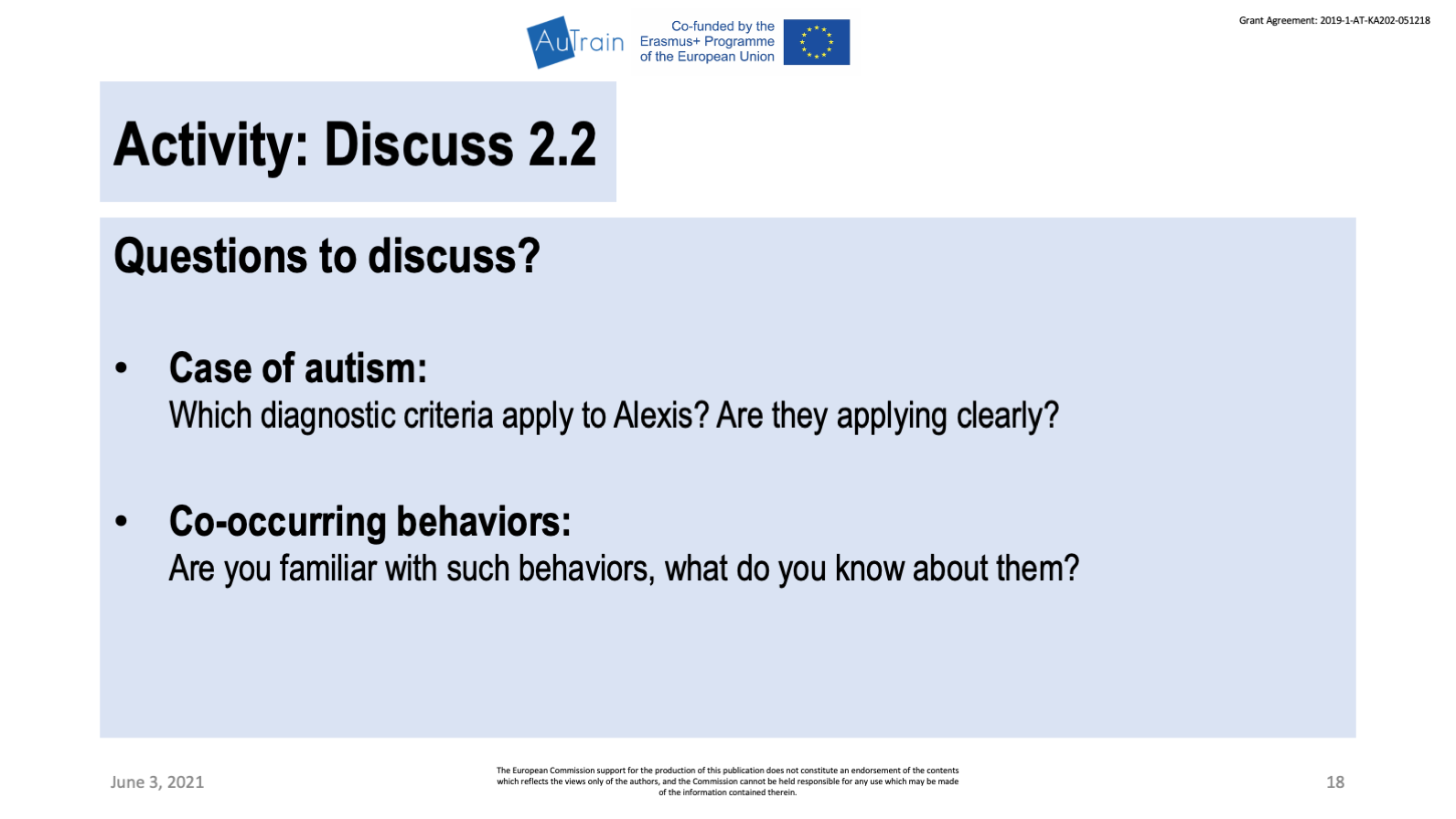
Introduce the aim of the activity
The aim of this activity is to discuss two question regarding the material that the participants have worked with the Read and Watch activity before, specially the case description and the co-occurring issues. The objective is that the participants discuss the case of Alexis in relation the diagnostic criteria and their general idea of ASD. How well does the case match their idea of ASD and the diagnostic criteria? The other questions pertain to what often co-occurs with autism. It is to make participants aware of that these can mask autism and make the real burden for the autistic person. What do participants know about these other conditions?
Introduce the material: The material from Read and Watch 2.2.
Procedures
Show the slide with the questions to the participants and give them a moment to read them. Then ask if someone would like to make a start to any of the questions. If there is no reaction, explain again what the activity wants to achieve. If there is still not reaction, start by answering the questions yourself, and then pass the word to anyone among the participants to start a discussion. Try to get a discussion going, rather than only people one after the other answering the questions. Allow 10 min. for this activity. You may want to use the whiteboard or the blackboard to write-down bullet points of what is said.
When it is time, wrap up, stressing the complexity and heterogeneity of autism, such as with “if you know someone with autism, you know one person with autism”, and then, lead over to the next activity.
#8. Introduce and develop the Activity: Think & Reflect 2.1
Note: Present slides number 19
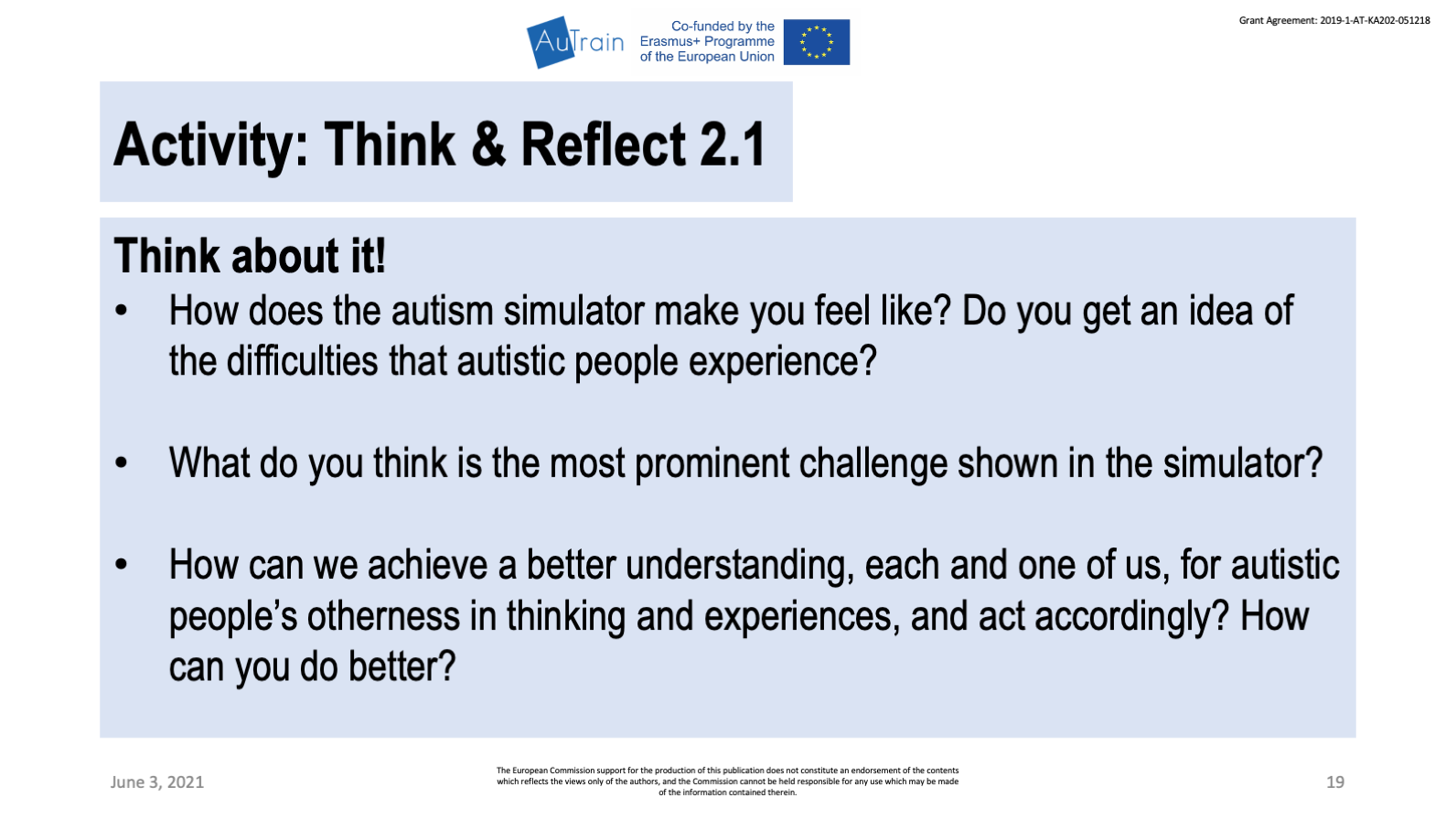
Introduce the aim of the activity
The aim of this activity is that the participants reflect and think about how it might be and feel to be autistic based on the Read and Watch activity material that they have worked with before, especially the autism simulator and autistic experiencing , thinking and perception video and worksheet. Can they imagine what it could be like, how it could impact daily life, how others react (negatively) to it? What do the participants think, how one should behave towards autistic people to make life easier for them?
Introduce the material: The material from Read and Watch 2.2.
Procedures
Show the slide with the points to the participants and give them a moment to read them and reflect. Then ask if someone would like to make a start. If there is no reaction, explain again what the activity wants to achieve. If there is still not reaction, start by reflecting yourself, and then pass the word to anyone among the participants. Allow 15 min. for this activity. You may want to use the whiteboard or the blackboard to write-down bullet points of what is said.
When it is time, wrap up, stressing again that autism can be challenging especially in an environment that does not understand autism, and people behave in ways that are hard for autistic people to grasp and navigate in.
Adaptation for online session: no need.
Then say, it is time for another break (15 min.) and show slide 20.


